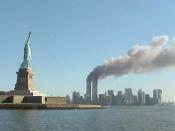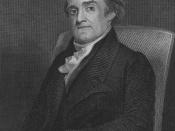Terrorism vs. asymmetrical conflict:
The 1972 Munich Massacre
Ever since September 11th at 8:45am, when the North Tower of the World Trade Center was struck by American flight 11, the word terrorism has taken on a whole new meaning, especially to us as Americans. In the past when we would hear of terrorism it always seemed to be taking place in the Middle East, African Embassy's, or Northern Ireland. It never really appeared to directly affect us in the United States; boy has that changed in the past month. Webster's Dictionary defines terrorism as, "the use of intimidation to attain one's goals or to advance one's cause."(Webster's) But in many cases people confuse terrorism with asymmetrical conflict, which is a conflict that is uneven or lopsided, mostly involving religious or military groups. Another point of confusion for people is simply what is the difference between terrorism and asymmetrical conflict. That question has never been easy to answer and probably never will be, but if you look into it good enough then you can draw your own conclusion.
The first situation that comes to mind when I think of the argumentative distinction between terrorism and asymmetrical conflict is the "Munich Massacre" at the 1972 Olympic games. In which Mitchell Bard writes that, "on the mourning of September 5, 1972, five Arab men wearing sweat suits and carrying athletic bags filled with weapons climbed the fence surrounding the Olympic Village" (Bard sec. 1). Mitchell Bard also recalls that, "Just before five o' clock, the Arabs knocked on the door of the Israeli wrestling coach Moshe Weinberg. When Weinberg opened the door he realized something was wrong and tried shouting to warn his associates, but his futile attempt was to no avail. Coach Weinberg and Israeli wrestler Joseph Romano attempted to block the...



Informative
This essay had a lot of new info I didn't know which help put more info into my essay
8 out of 8 people found this comment useful.